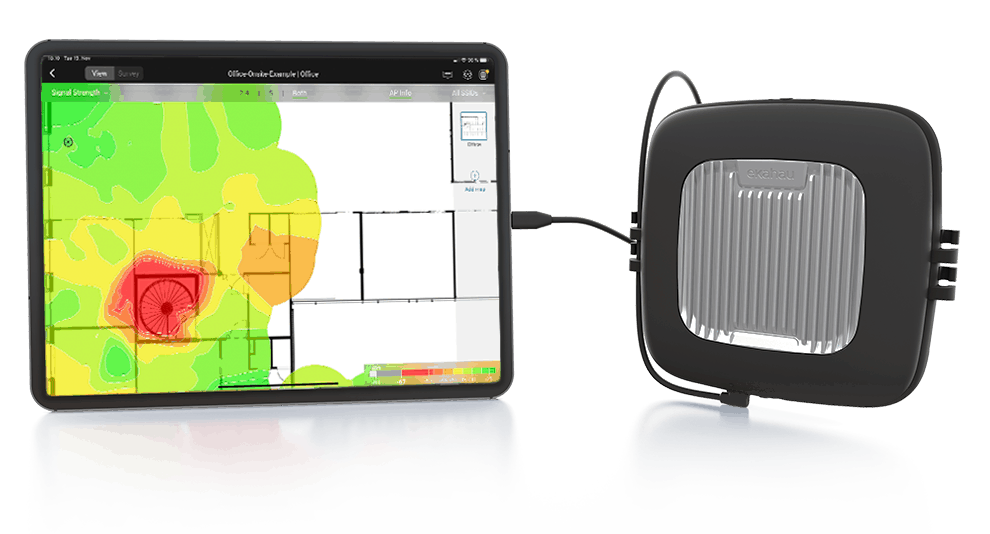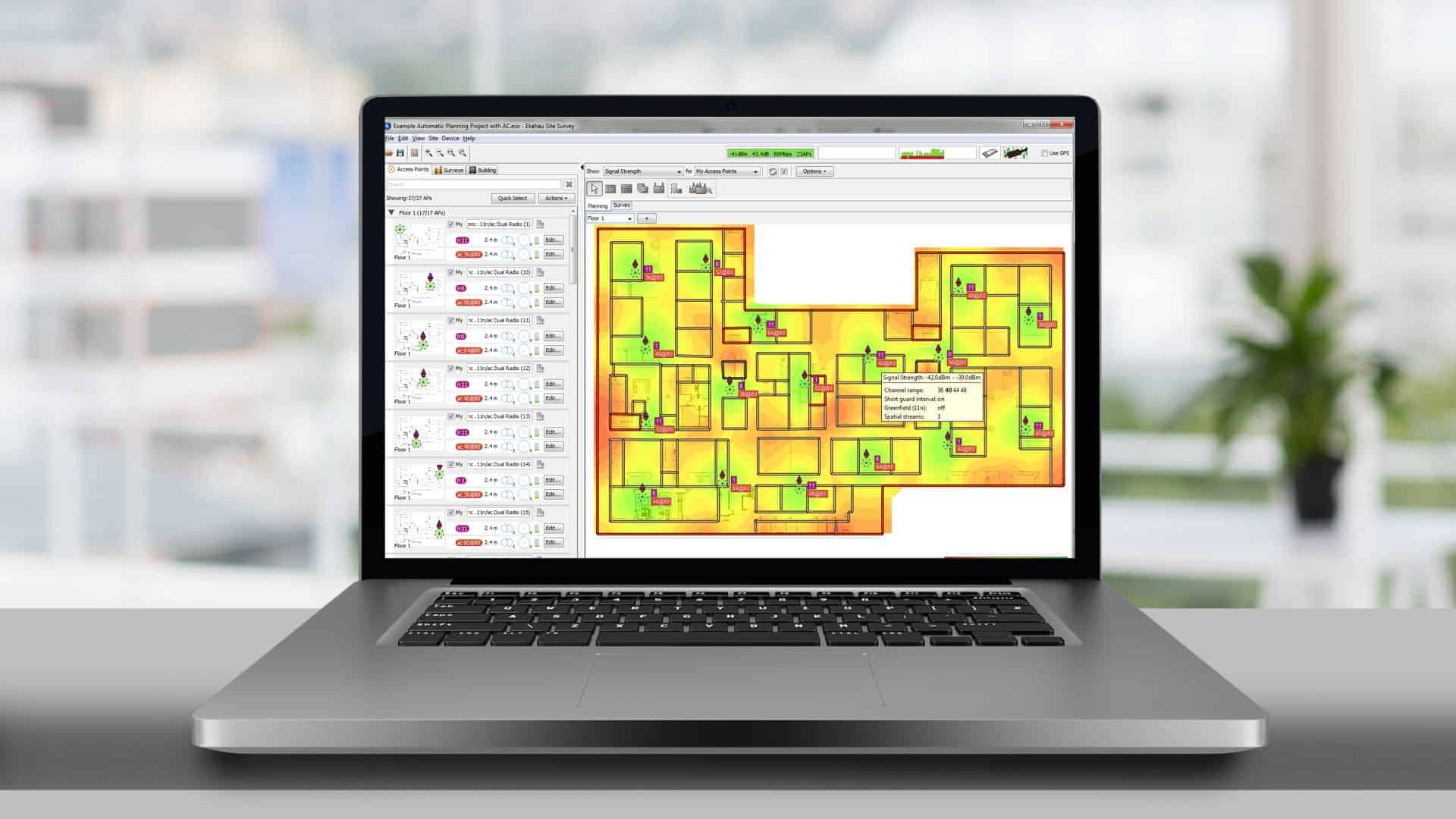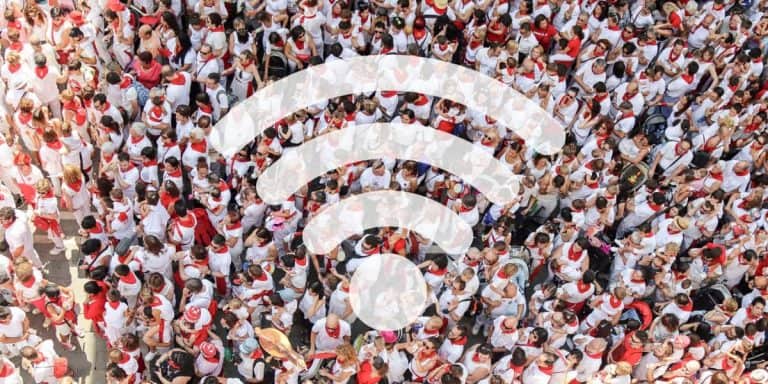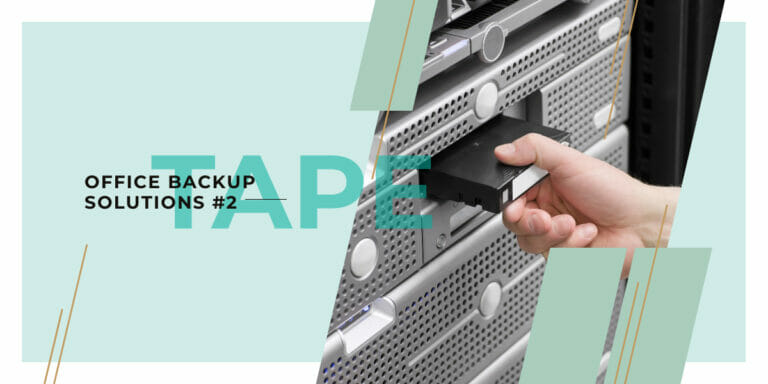What is a Wi-Fi Analysis and why do you need it?
Wi-Fi Analysis, what is that?
Wi-Fi is everywhere. In your home, your office, warehouse, hotel room, coffee shop, you name it, it’s there. And quite often, it’s… not up to expectations, let’s say. When that’s so, it’s time for a Wi-Fi Analysis.
When things aren’t quite perfect

Coverage might be spotty, with dead zones. Signal might be weak, or disappearing at times. Internet access might be slow and frustrating.
If you’re mobile, like moving your PC to a meeting room, or scanning from rack to rack in a big warehouse, getting disconnected on the way is also stressful.
But why? I mean, how complicated can it be? Just plug a Wi-Fi router and bam! Right? Who needs a Wi-Fi Analysis?
Well, no. Like most high-tech things, in order to “just work”, there’s a lot of things going on behind the scene, each one likely to fail or have been misconfigured.
If a network cable is pinched or cut or damaged, it’s relatively easy to see. For cables inside walls, we have tools to tell us where the damage is.
But how to you know where, and how, the Wi-Fi fails?
Enter the Wi-Fi Analyzer
A Wi-Fi analysis, or Wi-Fi Survey, is a solution to measure Wi-Fi signal, and potential noise and disturbance sources.

The Wi-Fi analyzer allows us to detect lacks of coverage, signal strength issues, noise issues (noise directly affects speed, even with a strong signal), and more tricky things such as Co-Channel Interference (CCI) or worse, Adjacent Channel Interference (ACI).
A Wi-Fi site survey enables us to calculate the theoretical throughput of your Wi-Fi devices, and match that with the actual number of users and requirements. Having 20 designers doing heavy downloads isn’t the same as having 20 people checking mail and doing light browsing.
We not only measure your own Wi-Fi Access Points, but also signals coming from your neighbors. Oh yes, and believe me, it can be quite crowded. In an office building, or worse, in a commercial center for example, you can get dozens of signals coming from just about anywhere, out of your control.
This can, and does, affect your Wi-Fi performance in AirTime (how busy a channel is), CCI and ACI, Signal Noise Ratio, etc.
There are several technologies to achieve this, and among the very best ones is Ekahau Site Survey. And it’s great, really.
We love it so much that we certified our engineers for it, and performed many Wi-Fi analysis for our clients, from big multi-storey shops and offices to small luxury boutiques.
I’ve seen things you people wouldn’t believe.
We’ve seem Access Points in a ceiling, pointed upwards (great for the neighbors upstairs, not so good for your staff). Access Points downright malfunctioning. APs left with default or Auto settings, ending up all using the same channels and jamming each other.
We’ve seen 50 people crowding one central AP while others nearby where unused. We’ve seen old motion detectors spamming used frequencies with high-power beams that deafened APs.
Oh yes, a lot can go wrong. And without a Wi-Fi analysis, it can be very tricky to know exactly what.
What does it take to do a Wi-Fi analysis?
Several tools exist to perform a Wi-Fi analysis. Some will just give you real-time signal readouts, some give you a quick Wi-Fi heatmap that gives you a fuller picture. Some again use special sensors to take a lot more parameters into account.
Once you have the measures, understanding them, finding what’s out of ordinary and why is where the expertise really shines. A heatmap doesn’t give you all you need to know, and can even induce you into error if not complemented with other measures.
All in all, a full-floor office can be analyzed in about half a day, accompanied by a full report with suggestions for improvement.
We provide all the tools and Ekahau license necessary for the task.
OK, so what do you get?
So that’s all good, we do a Wi-Fi survey. But what kind of insight will you get?
Our reports are customized to your specific layout, but contains at least:
- A full coverage heatmap, giving you the measured signal strength all over the areas
- The quality of that signal (presence of noise, co-channel and adjacent-channel interferences)
- The planned vs actual capacity of your network (do you have too many devices per AP?)
- The resilience of your network (if one AP fails, are you still covered?)
- The general connectivity and stability of the link
If we find issues in any of these topics, we’ll point them out and suggest ways of improvement.

Rather than blindly adding APs, we’ll point out exactly what’s wrong, and what what’s the best way to remedy. From experience, a change of configuration or positioning of AP can fix a lot of things, with minimal expense.
When do we start?
Ready to get your Wi-Fi to maximum performance? Let’s get started!






